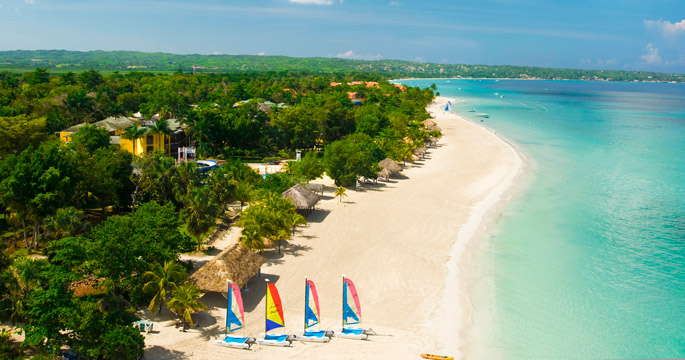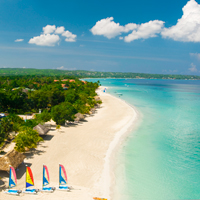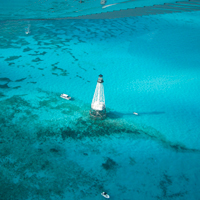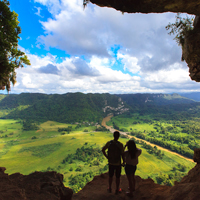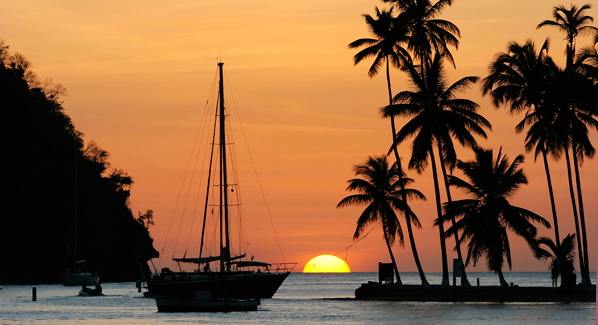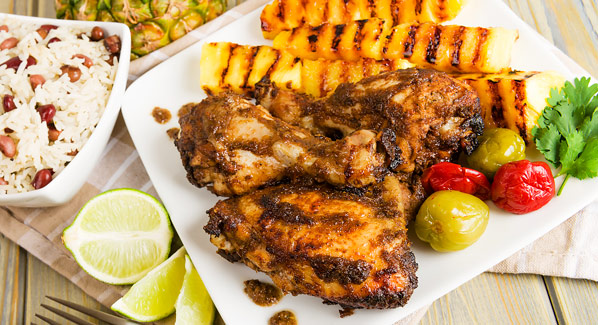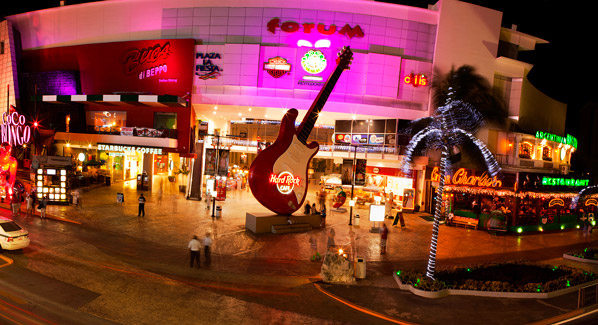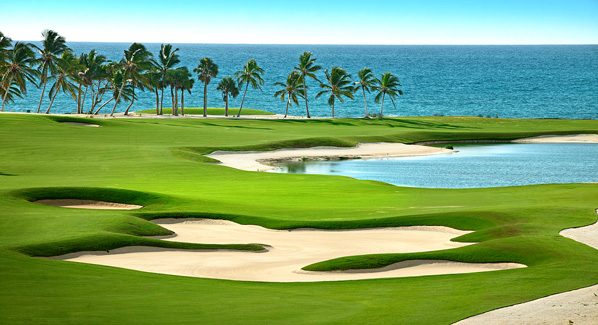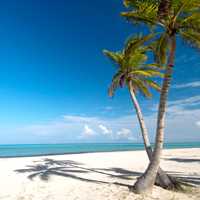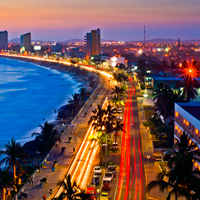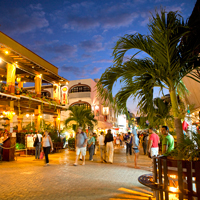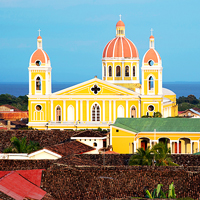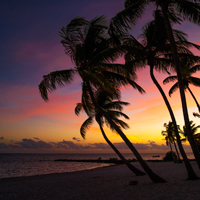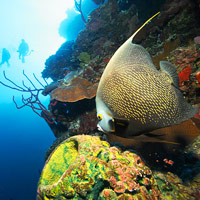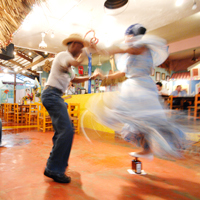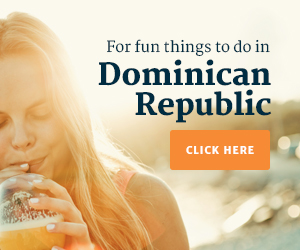From a quiet coastal village with a single road, Playa del Carmen has blossomed into a chic, international beach destination. But the arrival of the beautiful people hasn’t marred the landscape. High rises don’t overshadow the palms, downtown remains charming Mexican rather than internationally ostentatious, and strolling the beach or the avenue is still the best way to get around. By day, its shorts and flip-flops, but when the sun sets, sexy sultry dresses are on display, while the gents don linen slacks and maybe a tailored guayabera shirt.
1 Shopping Spree
Few shoppers will emerge from Playa’s Fifth Avenue boutiques empty handed. Some of the best retail is between Calles 4 and 10 where you’ll find unique jewelry and the latest fashion from Mexican and International designers. If it’s local artisanal products you seek, look for Talavera pottery, the hand-painted earthenware made into frogs, turtles, lizards and dragonflies. For Mayan clothing bring back a huipil, the traditional blouse worn by Mayan women for centuries. Shops are also loaded with candleholders, hand-carved wall art and crucifixes, mirrors, leather goods and plenty of blankets and rugs.
2 Fifth Avenue South of the Border
Playa is a walking town. Running parallel to the beach is an inviting pathway where cafes and bistros spill out onto the brick pavers. Along the way are taco stands, street food vendors, dive shops and lively beach bars. Fifth Avenue, the main thoroughfare through town, is designated as a pedestrian-only promenade through downtown. The avenues run parallel to the beach, and the calles run perpendicular. Without once consulting a map, you can enjoy the art of exploring. After a stroll, retire to a secluded patio to relax or a table along the walkway for optimal people watching.
3 From Jalapeno to Ancho
In Playa you can dine on a seven-course menu or grab a taco on the run. Mexican, Italian and Thai menus mix with seafood and steak houses, but the evolving restaurant scene also explodes with exotic spices and innovative touches by chefs from around the world. The Yucatan adds plenty of peppers, chilies and chocolate for inspiration. For a local delicacy, try fish painted with red achiote paste, tangy but not as fiery as the local habanero chili. Local fires roast fish, turkey and pork covered in palm leaves or wrapped in plantain leaves. For the less daring there is the familiar sopa de lima, the chicken soup with shreds of chicken topped with tortillas, or caldo xochitl, a chicken soup with avocado.
4 Boutique Properties
There are no cookie-cutter resorts in the center of town. Instead what you’ll find are small boutique hotels with character, each flaunting its unique appeal. El Deseo has a rooftop bar where guests sip exotic cocktails and lounge on beds under the stars. Mosquito Blue channels the Mediterranean with white walls, plenty of wrought iron and lovely gardens that surround two pools where guests enjoy privacy and lounge at day’s end. In the heart of town, La Tortuga captivates with a decor that melds old-world Mexico with beachfront palapa style and a sculpted serpentine pool that winds through lush landscaping.
5 Disney a la Mexico
For families, or those who just love theme parks, the Yucatan offers a distinctly Mexican take on the experience. There are theme parks up and down the Riviera Maya corridors, and the largest is Xcaret, which sits just three miles south of Playa. It’s the Yucatan’s most visited eco- archaeological theme park, tying many attractions to Mayan life, history and cultures while also preserving and incorporating the natural landscape. There are shows and spectacles, but also an aviary, botanical gardens, a turtle breeding farm and a butterfly garden. Sorry, no splashing roller coasters here, but there is the snorkeling river that runs part underground and out to the sea.
6 Stunning Ruins
At the southern end of the Riviera Maya corridor, just a short drive from Playa, is Tulum, the Yucatan’s most visited Mayan ruins. It is easily reached and therefore very popular with tour bus groups, so plan on visiting early or late to avoid the crowds. The ruins are compact, with the castillo being the largest structure, but the temple with frescoes is the most viewed. It’s pegged as the most impressive ruins in the Yucatan because of the stunning views of ancient stone structures set on a cliff overlooking the turquoise seas.
7 The Mayan Underworld
Hidden in the Mayan jungle lie the cenotes, underground waterways and tunnels that cut though the limestone substrate and provide fresh water to the region. These aquamarine pools flow into hidden caverns where stalactites and stalagmites are revealed by filtered sunlight. For the Maya these were the sacred waterways to the spiritual underworld. Join an eco-minded group to explore the caves; some allow snorkeling and swimming or relaxing on inner tubes, others even have rappelling while many are for exploration on foot only.
8 Where the Sky was Born
The Maya called it “where the sky is born.” The sprawling Sian Ka’an Biosphere Reserve abuts the southern end of the Riviera Maya. This 1.3 million-acre ecological sanctuary encompasses freshwater and coastal lagoons, mangrove swamps, cays, savannas, tropical forests and barrier reefs. The area is home to more than 1,000 varieties of plants, 350 species of birds and 70 different mammals. You’ll find endangered manatees, crocodiles, jaguars and turtles. Tour with a knowledgeable guide familiar with the local flora and fauna, join a group of bird watchers, visit Mayan ruins or kayak through the mangroves.
9 Nightlife
The shorts and flip-flop crowd owns the beach at happy hour, but nighttime action moves to another level, where a bit more style is often on display. A stop off at the Blue Parrot, one of the most popular for years is de rigueur, and after that Fly at Deseo is good for exotic cocktails and people watching. You’ll find jazz bars, where jazz is blended with Latino music and Mexican music. Diablito Cha Cha Cha pulls in crowds with a disc jockey who mixes up funk, hip hop and house music, and La Santanera is an eclectic spot with a distinctive Mexican spirit and a DJ who blends up retro salsa, cumbia and merengue rhythms.
10 Mexico Serenades
While Italian, French and English are widely spoken in Playa, there’s no doubt that you are in Mexico when the mariachis stroll down the avenue come evening. Outdoor cafes, patios and even coffee shops are greeted by the moving musicians dressed appropriately in tightly fitting black suits and embroidered vests with silver buttons. Take in the warmth of traditional Mexican ballads, and if the mood strikes, be ready to chime in on the chorus of favorites such as Cielito Lindo. If you can’t remember “Canta y no llores,” you’ll at least be good to chime in for some “Ay, Ay, Ay, Ay…”

